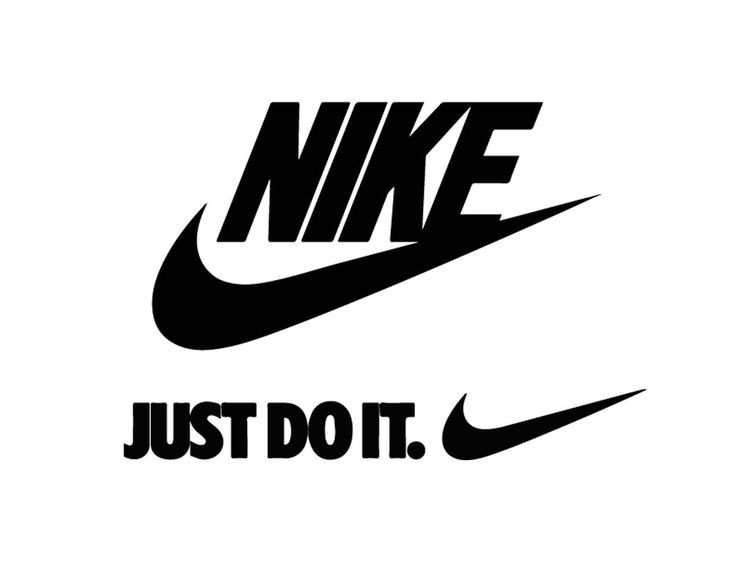Article Content:
What is Brand Strategy?
The Importance of Brand Strategy
What Happens Without an Effective
Brand Strategy?
7 Inspiring Brand Strategy Case Studies
Lessons Learned from the Case Studies
Brand strategy serves as the guiding compass that leads businesses to success. It shapes how a brand is perceived and positioned in the minds of customers, setting it apart from competitors. In this article, we will dive deep into the brand strategies of renowned companies such as Apple, Nike, Starbucks, Tesla, LEGO, Spotify, and Amazon, drawing valuable lessons from their experiences.
What is Brand Strategy?
Brand strategy is the cornerstone of establishing a company’s identity. This strategy outlines the core values, target audience, appearance, and promotional methods of the brand. Think of it as a roadmap that defines who the company is as a brand and how it communicates that identity to the world. It influences everything from messaging and logo design to customer interactions and corporate culture.
An effective brand strategy must be clear, adaptable, and focused. It’s important to understand that brand strategy differs from business strategy. While business strategy centers on growth and profitability, brand strategy focuses on the emotional connection with the audience.
To develop a strong brand strategy, conduct thorough market research, create a memorable brand identity, and plan marketing efforts accordingly. Prioritize trustworthiness and reliability, and consistently review and refine the strategy to maintain its relevance. By following these principles, a brand can stand out and form meaningful connections with potential customers.
 |
The Importance of Brand Strategy
Brand strategy is the DNA of a business. Just as DNA defines every aspect of a person, brand strategy intricately weaves together the traits and direction of a company. A brand without a strategy is like a house without a blueprint—purposeless and undefined.
Why should we care about this? Here are 9 reasons why having an effective brand strategy is crucial:
- Builds Trust: A consistent brand fosters trust. Customers are more likely to return when they recognize and can predict the quality of a brand. For instance, a local bakery that consistently uses high-quality ingredients earns the trust of its community over time.
- Creates Brand Recognition: Unique branding elements increase brand awareness and make a business memorable.
- Boosts Business Value: A strong brand often commands higher prices due to the emotional value attached to it. For example, a coffee shop with a well-known organic coffee brand can charge more than a regular café.
- Guides Marketing Efforts: A clear brand strategy directs how, when, and where a business should advertise. For example, a gym may choose to advertise in a local magazine with images showcasing modern equipment and spacious interiors to attract customers.
- Enhances Customer Loyalty: A clear brand can build a community of loyal followers. For example, a vintage clothing store might host monthly ‘90s-themed events to attract repeat customers.
- Attracts Talent: A strong brand is easily recognizable and can attract the right talent aligned with the company’s vision. For instance, a popular online magazine can draw writers whose style matches the brand's content.
- Differentiates from Competitors: In a competitive market, differentiation is key to standing out and attracting customers. A good brand strategy helps a business develop a unique image that sets it apart from competitors.
- Encourages Brand Advocacy: Satisfied customers can become brand ambassadors. Regular customers of a local organic juice bar might rave about it to their friends and family, driving curiosity and new business.
- Provides Clear Growth Direction: An effective brand strategy can set a clear path for scaling operations and entering new markets. For example, a small-town artisan cheese producer can leverage its brand to expand distribution to nearby cities.
 |
What Happens Without an Effective Brand Strategy?
Imagine sailing across a vast ocean without a map or compass, tossed around by unpredictable waves. Navigating business strategy without an effective brand strategy can feel similarly aimless and fraught with obstacles.
- Inconsistent Brand Image: Without a clear strategy, a business may project a fragmented, inconsistent image that confuses customers. For example, constantly changing the concept of a company’s website could make customers doubt whether it’s the same brand or even a legitimate site, resulting in lost potential customers.
- Weakened Brand Value: Without a solid brand foundation, a business risks diluting its value in the market. For instance, a store that sells both luxury and cheap items might confuse consumers about its positioning, or a subscription-based website flooded with ads could tarnish its premium image.
- Missed Marketing Opportunities: A lack of brand strategy can lead to disjointed marketing efforts that miss key audience segments.
- Eroded Customer Trust: Inconsistent branding can erode trust as customers prefer to engage with reputable businesses. For example, a coffee shop with inconsistent coffee quality may lose regular customers who expect consistency.
- Loss of Differentiation: Without a unique brand identity, a business may be overshadowed by competitors. For instance, larger chains could outshine a local craft store if it doesn’t offer unique products.
- Misaligned Target Audience: Without a defined brand strategy, businesses may target the wrong demographic groups, leading to inefficient resource use.
- Inefficient Resource Allocation: Without a clear brand strategy, businesses may waste resources on strategies that don’t align with core goals. For example, an online shoe store might invest in upgrading its facilities but neglect the demand for launching a wider variety of products.
- Unclear Mission and Vision: Internal teams may lack direction without a brand strategy, reducing motivation and alignment. Without a clear brand image, recruiting talented individuals to grow the brand can be challenging.
- Reduced Employee Morale: Employees prefer working for a brand with a clear identity, and the absence of one can lead to decreased motivation.
- Limited Growth Opportunities: Businesses with ineffective brand strategies may struggle to identify or capitalize on potential growth areas. For instance, a brewery without a defined brand strategy might miss out on partnering with local eateries or restaurants.
 |
7 Inspiring Brand Strategy Case Studies
Apple – Simplicity and Innovation
Apple's brand strategy is a testament to its long-term success, revolving around simplicity, emotional connection, product focus, brand consistency, and innovation.
By prioritizing customer experience and fostering brand loyalty through its ecosystem, Apple has created a global customer base. Its targeted focus on the premium market segment, standout product launches, and emphasis on after-sales service further strengthen its brand.
In essence, Apple’s brand strategy isn’t just about selling products—it’s about selling a lifestyle, making it an iconic example of effective, long-term brand marketing.
 |
Nike – Growing Through Sports
Nike’s “Just Do It” slogan is not just marketing; it’s a global call to elevate personal value through sports.
This slogan transcends advertising—it’s a motivational message that inspires people worldwide to overcome challenges and pursue their athletic dreams. Essentially, it’s a powerful reminder to believe in oneself and strive for excellence.
Nike’s commitment goes beyond catchy phrases. Its marketing campaigns consistently champion diversity, equality, and the unifying power of sports. By partnering with athletes and sports events, Nike reinforces its mission to make sports inclusive and elevate its stature. In summary, Nike isn’t just marketing sportswear; it advocates for a world driven by determination, inclusion, and sportsmanship.
 |
Starbucks – The “Third Place” Experience
Starbucks positions itself as the “third place” for customers, a space that exists between home and work. The brand’s success lies in fostering community and reliability. Every Starbucks store is designed to offer a cozy space for socializing, working, or relaxing, and the consistent quality of its beverages and store ambiance ensures familiarity and trust for customers worldwide.
Moreover, Starbucks prides itself on ethically sourced coffee, addressing concerns of socially conscious consumers. For them, each cup of coffee isn’t just a drink; it symbolizes a commitment to sustainability and global community values. Essentially, Starbucks isn’t just selling coffee; it’s delivering a consistent community experience and upholding the trust placed in every cup.
 |
Tesla – Pushing the Boundaries of Innovation
Tesla’s marketing revolves around innovation and sustainable energy, positioning electric vehicles as the future of transportation. Instead of conventional advertising, Tesla focuses on product quality and relies heavily on word of mouth. The cars, with their cutting-edge technology and eco-friendliness, resonate with both tech enthusiasts and environmentally conscious customers. These supporters propel Tesla's growth without traditional ad campaigns.
In short, Tesla’s growth is fueled by its mission to revolutionize transportation and energy sustainably.
 |
LEGO – Fostering Creativity
LEGO’s marketing emphasizes creativity, tapping into deep nostalgia and the joy of building. Many remember LEGO from their childhood, creating a cross-generational connection. By invoking this nostalgia, along with a drive to inspire creativity, LEGO resonates with both children and adults.
LEGO connects with older fans by encouraging them to share their creations. By highlighting these fan-made masterpieces, LEGO fosters community and reinforces its brand message of limitless creative potential. Essentially, LEGO’s approach positions the brand not just as a toy but as a tool for imagination at any age.
 |
Spotify – Personalizing the Music ExperienceSpotify – Cá nhân hóa trải nghiệm âm nhạc
Spotify’s brand strategy centers around personalizing the music experience for users. At the heart of this strategy is the adept use of data to tailor the user experience.
Spotify continually collects data on users’ listening habits, preferences, and behaviors. This data is then used to create personalized playlists and discovery mechanisms. Playlists like “Discover Weekly” introduce users to new songs based on their preferences, keeping them engaged and discovering new content. This enhances user satisfaction and fosters a deeper connection with the platform.
In essence, Spotify’s brand strategy is built on the promise of a personalized music journey, continuously evolving through the clever use of data analytics and creative playlist management.
 |
Amazon
Amazon’s brand strategy is a masterclass in customer-centric innovation. The company relentlessly focuses on understanding and satisfying its customers' needs. From personalized recommendations to fast delivery options, every aspect of Amazon’s brand is designed to make the shopping experience as seamless and convenient as possible.
Amazon also excels at leveraging technology to continuously innovate, staying ahead of competitors by offering services like Amazon Prime, Alexa, and AWS. This constant evolution ensures that the brand remains relevant and indispensable to its users.
Ultimately, Amazon’s brand strategy revolves around putting the customer first, constantly evolving to meet their changing needs, and delivering exceptional value.
 |
Lessons Learned from the Case Studies
-
Delivering Extraordinary Customer Experiences: Leading brands prioritize creating unique, memorable experiences that resonate deeply with their customers, leaving a lasting impression.
-
Leading in Technology and Trends: The most successful brands are pioneers, embracing new technologies and pursuing emerging trends to stay relevant and meet the ever-evolving demands of the market.
-
Staying True to Core Values: Every successful brand is built on core values that define its identity. These brands remain steadfast in communicating and embodying those values in everything they do.
-
Cultivating Loyal Communities: Building a loyal community is an integral part of a successful brand strategy, fostering deeper engagement and strengthening connections with customers.
-
Driving Innovation and Creativity: Top brands constantly push the boundaries of innovation, continually seeking fresh ways to enhance their products and services and stay ahead of the curve.
From case studies on the brand strategies of Apple, Nike, Starbucks, Tesla, LEGO, Spotify, and Amazon, it's clear that a powerful brand strategy is not only essential for standing out and achieving success in today’s competitive market but also the key to forging deep, meaningful connections with customers. This demonstrates that for any business to thrive and grow, understanding and implementing an effective brand strategy is undeniably crucial.
See more:
8 POWERFUL IMPACTS A STRONG BRAND CAN HAVE ON YOUR BUSINESS
10 BRANDING STRATEGY MISTAKES THAT CAN LEAD YOUR BUSINESS TO "BANKRUPTCY"
2024 BRANDING TRENDS: STAY UPDATED TO KEEP AHEAD OF THE CURVE!
TRÒN HOUSE
